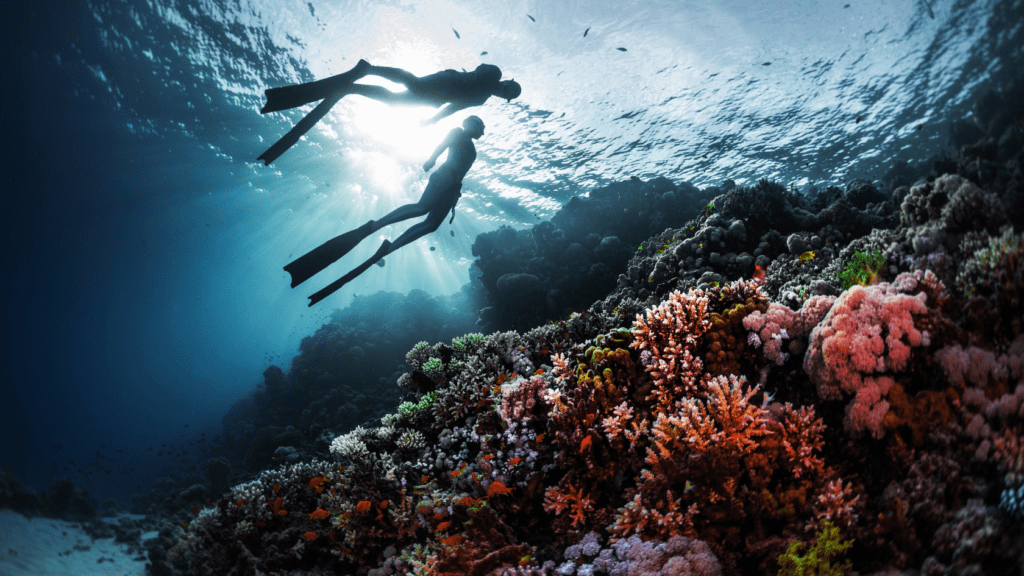Komodo Island is a hidden gem in the Indonesian archipelago, renowned for its breathtaking natural beauty and unique biodiversity. This remote island offers a remarkable experience for both scuba diving and wildlife enthusiasts, drawing visitors from around the world. The pristine waters surrounding Komodo Island are home to a rich variety of marine life, making it a top destination for underwater adventures.

In addition to its vibrant underwater ecosystem, Komodo Island is famous for its terrestrial inhabitants—the legendary Komodo dragons. These ancient reptiles, the largest lizards on earth, roam freely in the island’s rugged terrain. Whether you are diving in the crystal-clear waters or trekking through the rugged landscapes, Komodo Island provides an unforgettable adventure for all nature lovers.
Location of Komodo Island
Geographic Coordinates
located in the eastern part of Indonesia, within the Komodo National Park. Its geographic coordinates are approximately 8.6°S latitude and 119.5°E longitude. This strategic position places it in the heart of the Indonesian archipelago.
The island is situated between the islands of Sumbawa and Flores. This central location in the Lesser Sunda Islands makes it easily accessible for travelers coming from various parts of Indonesia. The exact coordinates ensure precise navigation and accessibility.
Komodo Island’s geographic location places it within the Coral Triangle, known for its rich marine biodiversity. This region’s unique geographical attributes contribute to the island’s exceptional underwater ecosystems. The island’s coordinates are vital for mapping and understanding its environmental significance.
Proximity to Major Cities
relatively remote but is accessible from major cities in Indonesia. The nearest significant city is Labuan Bajo, located on the island of Flores. Labuan Bajo serves as the primary gateway for visitors traveling to Komodo Island.
Labuan Bajo is approximately 30 kilometers (about 19 miles) from Komodo Island. This proximity allows for a convenient transfer by boat or liveaboard. The journey from Labuan Bajo to Komodo Island typically takes about one to two hours.
Other major cities, such as Bali and Jakarta, are further away but well-connected to Labuan Bajo. Flights from Bali to Labuan Bajo take around an hour, making it a common starting point for travelers heading to Komodo Island. This connectivity facilitates easier access to the island from various parts of Indonesia.
Accessibility and Transportation
Reaching Komodo Island involves a combination of air and sea travel. Travelers usually fly into Labuan Bajo before taking a boat to the island. The boat ride offers scenic views and a preview of the island’s natural beauty.
Several tour operators offer boat services from Labuan Bajo to Komodo Island. These boats range from basic ferries to luxury liveaboards, catering to different preferences and budgets. The choice of transportation impacts the overall experience of visiting the island.
Once on the island, transportation options include guided tours and trekking. These tours are essential for exploring the island’s diverse landscapes and spotting wildlife. Accessibility to different parts of the island is well-managed to ensure a comprehensive visitor experience.
Scuba Diving in Komodo Island
Exploring Vibrant Marine Life
celebrated for its exceptional scuba diving opportunities. The island’s underwater environment boasts an incredible diversity of marine species, including colorful coral reefs, schools of tropical fish, and majestic manta rays. Diving enthusiasts can explore sites such as Batu Bolong and Manta Point, where the marine life is both abundant and awe-inspiring.
The clear waters around Komodo Island offer excellent visibility, allowing divers to fully appreciate the underwater landscapes. The combination of vibrant coral gardens and diverse marine creatures makes every dive a unique and thrilling experience. With numerous dive sites catering to different skill levels, Komodo Island is a haven for both novice and experienced divers.
Encountering Unique Marine Species
In addition to its stunning coral reefs, known for its encounters with rare marine species. Divers have the chance to spot the elusive wobbegong shark, vibrant nudibranchs, and even the occasional whale shark. These encounters contribute to the island’s reputation as one of the world’s top dive destinations.
The rich marine biodiversity around Komodo Island is a result of its location within the Coral Triangle, a region renowned for its high marine biodiversity. This unique geographical position ensures that the waters surrounding Komodo Island remain a hotspot for marine life, attracting divers seeking extraordinary underwater experiences.
Wildlife Adventures
Discovering the Komodo Dragons
perhaps best known for its iconic residents—the Komodo dragons. These formidable lizards can grow up to ten feet long and weigh over 150 pounds, making them a sight to behold. Visitors to the island can observe these prehistoric creatures in their natural habitat, adding an element of adventure to their trip.
Guided tours are available to safely explore the island and observe the Komodo dragons up close. These tours provide valuable insights into the behavior and ecology of these magnificent reptiles, enhancing the overall experience. For wildlife enthusiasts, witnessing the Komodo dragons in their natural environment is a highlight of any visit to the island.
Exploring the Island’s Diverse Ecosystems
Beyond the Komodo dragons, the island’s diverse ecosystems offer additional wildlife experiences. The varied landscapes, including savannahs, forests, and hills, support a range of animal species, from deer and wild boars to a variety of bird species. Each ecosystem presents its own unique opportunities for wildlife observation.
Hiking trails across Komodo Island allow visitors to explore these diverse habitats and enjoy panoramic views of the island’s natural beauty. These treks not only provide an opportunity to spot various wildlife but also allow visitors to appreciate the stunning landscapes that make Komodo Island so special.
